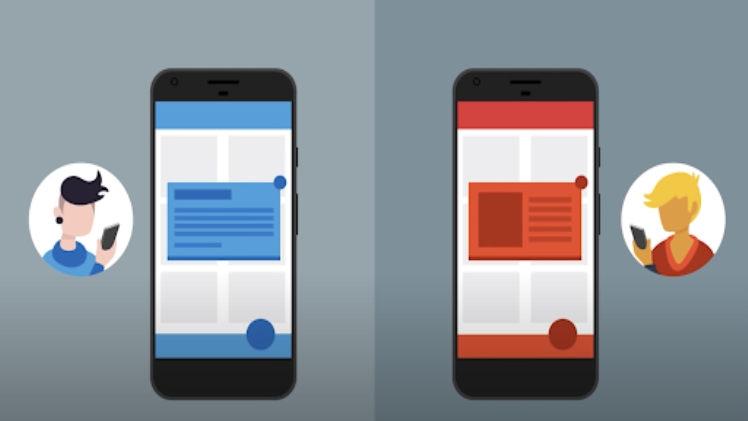In today’s fiercely competitive mobile app landscape, where millions of apps jostle for user attention, establishing a strong connection with your users is more crucial than ever. This is where user engagement takes the spotlight. User engagement encompasses a suite of metrics and interactions that indicate how deeply and frequently users interact with your mobile app’s content and features. At the heart of user engagement strategies lies the effective utilization of in-app messages, a potent tool that can transform passive apple watch app users into active, loyal advocates. At FindDiffer, we provide a complete suite of in-app message solutions that you can use to engage your users more effectively – you can check out our website at https://finddiffer.com/.
I. Definition of User Engagement in Mobile Apps
User engagement is more than just the number of downloads your app accumulates. It delves into the quality of interactions users have within your app. It’s a multifaceted concept that encompasses various metrics, including session duration, the frequency of app usage, interactions with features, social sharing, and more. In essence, user engagement quantifies the level of commitment and enthusiasm users exhibit towards your app.
A highly engaged user doesn’t merely install an app and forget about it. They continue to interact with its functionalities, explore its content, and derive value from it over time. This ongoing interaction not only indicates a strong user-app relationship but also contributes to the overall success of the app.
Importance of User Engagement for App Success
User engagement isn’t just a vanity metric; it’s a fundamental driver of app success. An app with high user engagement tends to enjoy several benefits that directly impact its bottom line:
Increased Retention: Engaged users are more likely to stick around. They find value in your app and are less prone to churn, ensuring a stable user base.
Word-of-Mouth Marketing: Engaged users often become brand advocates, spreading positive word-of-mouth recommendations among their peers, leading to organic growth.
Monetization Opportunities: Engaged users are more receptive to in-app purchases, subscriptions, and other revenue-generating features, boosting your app’s profitability.
Improved App Store Rankings: User engagement metrics, such as session duration and app usage frequency, are considered by app stores when determining search rankings, potentially improving your app’s discoverability.
Enhanced User Insights: Engaged users provide valuable data through their interactions, helping you understand their preferences, pain points, and usage patterns, which can guide iterative improvements.
II. Implementation of In-App Messages in iOS Apps
Overview of iOS Frameworks for In-App Messaging
When it comes to crafting seamless in-app messaging experiences, iOS developers have a duo of powerful frameworks at their disposal:
Apple’s UserNotifications Framework: This framework lies at the core of managing notifications on iOS devices. While traditionally associated with push notifications, the UserNotifications framework also facilitates in-app messages. By utilising this framework, developers can seamlessly integrate in-app messages into the app’s workflow. This ensures consistent messaging experiences across various iOS versions.
Integration of In-App Messages with UIKit: UIKit, the framework responsible for constructing the user interface of iOS applications, plays a crucial role in bringing in-app messages to life. By weaving in-app messages directly into the UIKit components, developers can maintain a harmonious design language throughout the apple watch app. This approach allows for a smoother integration of messages within the app’s visual hierarchy.
Technical Considerations and Limitations
The successful deployment of in-app messages requires meticulous attention to technical aspects and potential limitations. Addressing these factors ensures a flawless user experience:
Permission Requests and User Opt-Ins: Respecting user privacy and preferences is paramount. Before displaying in-app messages, developers must adhere to the permission-driven model of iOS. This involves requesting user opt-in to receive notifications and messages. Striking a balance between providing value and not overwhelming users with messages is crucial to retaining user engagement.
Handling Different iOS Versions and Devices: iOS ecosystem exhibits diversity in terms of device models and operating system versions. In- apple watch app messages need to be tailored to function seamlessly across this spectrum. This mandates a comprehensive testing approach to ensure messages render accurately on various screen sizes, orientations, and iOS iterations.
Customization Options for In-App Messages
The allure of in-app messages lies in their capacity to be both informative and visually appealing. Customization options play a pivotal role in achieving this balance:
Design Flexibility: In-app messages should be an extension of the app’s design ethos. Developers can harness design flexibility to match the message’s aesthetics with the app’s overall look and feel. This alignment bolsters brand identity and fosters a sense of familiarity among users.
Animation and Interaction Possibilities: Adding a touch of animation and interactivity enhances the engagement quotient of in-app messages. Subtle entrance animations or interactive elements within the message can capture user attention effectively. However, moderation is key; animations should complement the message, not overpower it.
III. Future Trends In In-App Messaging For User Engagement
Voice and Gesture-Based In-App Messages for Accessibility
Accessibility has become a central concern in the digital realm, and this extends to in-app messaging as well. The future entails the integration of voice and gesture-based interactions for enhanced accessibility. With the rising popularity of voice assistants and smart speakers, incorporating voice commands into in-app messaging can cater to users with disabilities or those seeking hands-free interactions.
Similarly, leveraging gesture recognition technology allows users to interact with in-app messages through intuitive gestures. This advancement benefits users with mobility impairments and adds an element of novelty and engagement for all users. As devices become more attuned to these modes of interaction, apps that embrace these features will undoubtedly stand out in the competitive market.

IV.Conclusion
In the ever-expanding realm of mobile app development, in-app messages have emerged as a dynamic tool for enhancing user engagement, fostering brand loyalty, and delivering information in an interactive and effective manner. As we conclude our exploration of this vital facet of iOS Apple watch app development, let’s recap its role, emphasise the evolving strategies, and encourage app developers to harness its potential for iOS app success.
Frequently Asked Questions (FAQ)
Q: What are in-app messages, and why are they important for user engagement on iOS?
A: In-app messages are interactive notifications delivered within an app, enhancing user engagement by delivering personalised content, updates, and calls-to-action directly to users while they are actively using the app.
Q: How can I create impactful in-app messages for iOS users?
A: To create impactful in-app messages, ensure they are relevant, concise, and visually appealing. Tailor the message content to user preferences, use eye-catching visuals, and provide clear instructions or value propositions.
Q: What are some best practices for designing effective in-app messages?
A: Best practices include using compelling headlines, incorporating a clear and concise message, employing engaging visuals, utilizing personalization based on user behaviour, and strategically timing messages to avoid interrupting the user experience.
- Q: How can I strike the right balance between informative in-app messages and not overwhelming users?
A: Limit the frequency of in-app messages to avoid overwhelming users. Prioritize delivering messages that provide immediate value, such as personalized recommendations, time-sensitive updates, or exclusive offers.
Q: Are there any technical considerations when implementing in-app messages on iOS?
A: Yes, ensure that in-app messages are seamlessly integrated into the app’s user interface. Utilise the appropriate iOS APIs and frameworks for message delivery, and rigorously test the messages across different devices and iOS versions to ensure consistent performance.


